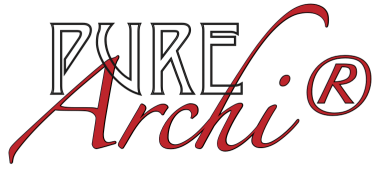Link: http://weblog.tetradian.com/2015/03/31/introducing-zerolaff/
[Embargoed for release on 01 April 2015]
Regular readers of this blog will know that I have a strong dislike of the ‘layered’ architecture-concepts common in frameworks, notations and metamodels such as those embedded in TOGAF, Archimate and the like.
For example, in my post ‘On layers in enterprise-architecture‘, I argued that when people ask how many layers there should be in an enterprise-architecture’, the correct answer should be “None”.
The same point came up in my earlier post on ‘Unravelling the anatomy of Archimate‘: the layered structure of the underlying metamodel was clearly far more of a hindrance than a help.
And when we look at services, much the same is also true for services and service-modelling: for example, in my post ‘What is the boundary of a service?‘, I showed that the perceived ‘boundary’ of a service is so much an arbitrary choice that arguably there is no real boundary at all.
Somewhat in parallel with such analyses, as again readers here will know, I’ve been exploring the challenges of toolsets and notations for enterprise-architecture – such as in my post ‘Toolsets for associative modelling‘.
What’s come up from that work has been the clear understanding that there’s an urgent need for a full re-think around what we need in our notations for enterprise-architectures – and how such notations interact with and are used in our EA models and toolsets.
To that end, I’ve been working with toolset-developer Phil Beauvoir and Archimate guru Gerben Wierda with the aim of developing alternatives for the enterprise-architecture profession.
The outcome of that work is that, together, we are very proud to announce today the launch of PureArchi – the perfect notation for enterprise-architecture.
[PureArchi is] a better enterprise architecture modelling language that is ready for real enterprises and real scenarios, from heavy industry to the Internet of Things.
In conjunction with and to support the launch of PureArchi, but also to follow the themes expressed earlier above, I also launch today my own new enterprise-architecture framework, ZeroLAFF (the Zero-Layer Architecture Foundation Framework).
ZeroLAFF is the first formal EA framework that explicitly has zero layers, and hence, for the first time, fully frees enterprise-architects to develop their models as they choose.
This first iteration of ZeroLAFF will use PureArchi as its base-notation, and hence we expect that it will be fully supported in the next release of Archi, the popular open-source toolset for enterprise-architecture.
Somewhen in the relatively near future, ZeroLAFF will be updated to support a new intermediate version of the PureArchi notation, currently being developed jointly with Gerben Wierda, extending the purity of the PureArchi approach.
The design for this notation acknowledges that all architecture is about what happens between the boxes, and hence the boxes themselves are largely redundant. As a result, this notation will drop the nodes of the current version of PureArchi, and will consist exclusively of lines.
‘End-to-end’ processes will be indicated by the end-points of an arbitrary-length line; every interaction and flow is represented by double-lines, since anything could go both ways. The doubled nature of the lines also makes it easier to see where processes loop back on themselves in mobius formation.
(We believe that this new notation will be perfect for adoption by NSA, GCHQ and other security-agencies, because there are no dots in the notation, and hence impossible for anyone to join the dots.)
Looking further ahead, to PureArchi 2, we take inspiration from Victorian logician Charles Dodgson, who, in one of his most seminal works, asserted that, for the persons in his context, “the map they could all understand” was one that was devoid of all “merely conventional signs”. “Other maps are such shapes”, says Dodgson – shapes for which there is no real need at all, neither for navigation nor for anything else.
We therefore take this to mean that, according to Dodgson’s logic and our previous work on PureArchi, the perfect architecture-framework should have:
- no layers
- no boxes
- no lines
- no ‘conventional signs’
- no shapes of any kind
Hence, in accordance with Dodgson’s precepts for the most “perfect and absolute” map that everyone can understand with ease, all instances of architecture-models in the final version of ZeroLAFF should look like this:
We believe that it is innovations such as these that truly prove our value, and confirm our respective positions as the premier thought-leaders for the enterprise-architecture profession.

